Helicopter Flight Training Plan To Crash!
How to survive your next crash :: A fixed wing pilots perspective
Two words – DON’T PANIC!
Easy to say – but hard to do.
The best way to avoid panic is to be confident through mental preparation and practice. It is not good enough to say an emergency will never happen. It isn’t a question IF the engine will quit, but WHEN! Think of all those metal parts whizzing around in a helicopter crash, all the electrical connections, all the hoses….it’s a miracle the machine flies at all have a plan.
An essential part of avoiding panic is to always have a plan
The foundation of the plan is to avoid flying over tiger country, large bodies of water or above continuous cloud cover. The second part is to have a landing field selected before the engine fails. A suitable landing site, or the best possible landing site, should constantly be identified while flying. A good mental exercise is to say “The engine just quit where can I land?”
America is blessed with a great number of fields – some good, some bad. Ideal would be a 1000m long, recently grazed (but with no animals present), level field with no rocks and no power lines – suitable for a takeoff when the engine is repaired.

This perfect field would also be equipped with a nearby farmhouse, complete with friendly farmer, a phone and a cold beer fields can’t be fields without fences, and these are potential killers. They are often hard to spot from the air, but stock may graze the grass to different heights on each side of the wire.
Powerlines, like fences, can be difficult to see
The wires themselves are all but invisible. Look for lines of poles (or fence posts.) Out west, there are the infamous SWER lines (Single Wire. Earth Return) and the poles may be 500m or more apart. Many a crop duster has tangled with them. Long strips of attractive green ‘grass’ can be deceptive anywhere. These are probably wheat, or sugar cane fields and are a last resort, unless recently harvested or ploughed.
Landing in a mature sugarcane field with the crop two meters high will probably damage the aircraft and make the farmer angry. The beach can also be a trap. If the aircraft can’t be removed before the tide comes in, it will be a write-off. But the beach would be better than putting it down in the scrub. At least the passengers would be less likely to be injured.
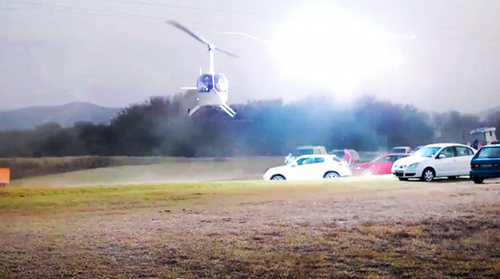
Always land with the furrows in a ploughed field. This may not be as easy as it sounds if the field has had recently harvested wheat headers will follow fence lines and the furrows for a while, but may deviate in the middle of the field in this situation, land along the fence line.
Of course, fields don’t have to be on level ground. Hillsides are perfectly useable. Crop dusters do it all the time. Their strips are on hills by choice so they can land uphill, load, and take off downhill. The technique for landing on a hillside is to pull the nose up and stall like a fly landing on a wall. A short landing slide is guaranteed, but don’t forget it may also slide back once settled.
A major factor in emergency landings is wind direction. Clues are smoke, ripples on dams, (smooth water against the wall is the windward side). Windmills, blowingdust, etc. It is best to land into the wind, but sometimes terrain or other considerations make this impossible. Downwind landings aren’t difficult and have the advantage of positive wind sheer. The biggest problem is the visual sensation of traveling very fast over the ground, which causes a reflex action of pulling back on the controls to slow down.
Not a good idea
It is essential to make a normal circuit, not so close to the field that you need to make steep turns. Be aware of the tendency for inexperienced dead-stick pilots to be too high on final flare, which can lead to an irretrievable overshoot and a long fall. New factors can become apparent on final, such as obstructions, rocks, animals, etc. Get ready to avoid them if you need to. I once hit a sheep which ran in front of my plane while I was landing in a field.
If you are rapidly approaching a fence, don’t just keep rolling. Pilots have been beheaded by fence wire! One option is to aim at the post, which should push it over, pull down the wires and thus keep them from cutting into the aircraft. This may or may not work.
Most fatalities in crashes come from impact situations. As the pilot gets lower, he/she instinctively pulls back on the controls and maybe attempts a skidding turn at the same time. These are moves which are guaranteed to produce a vertical impact. The best approach is a normal approach. A controlled crash beats a uncontrolled impact anytime.
We used to sit around in hangars in Alaska discussing the best way to survive a landing on the tundra. A normal touchdown would be sure to result with the chopper on its side.
But the bottom line is to always have a plan
If the chosen field’s farmhouse is abandoned, as many are, there may be no landline phone (and no cold beer) and cell phones are often out of range. A MAYDAY call on 121.5 while still in the air might get some attention. Even on the ground, it could be useful I once heard a commercial jet on 122.7 directing a ground crew to an outlanded glider.
The pilot had sent out a call on 121.5, which all airliners monitor. The pilot, also a glider pilot, came to the rescue Contact on 121.5 would be a better option or firing off a PLB/ELT beacon, which causes all sorts of expensive things to happen but is Personal Locator Beacons (PLB’s)are cheap insurance if all else fails (A meter square of aluminum foil makes a good ground plane.) And remember to stay with your helicopter!
The PLB and cell phone should be kept in a place which will be accessible if the aircraft finishes up on it’s side and/or if the occupants are injured. It is also essential to have something available to shatter the canopy if it jams or if the aircraft ends up inverted. This could be a heavy hammer or strong heavy knife securely fastened with provision for quick release.
The hammer can be part of the tie down kit. In addition, the plane should always carry plenty of water, matches, a flashlight, a Leatherman type multi-tool, rope and a packet of those high visibility orange garden waste bags to spread on the ground for search and rescue.
FAA
Search and rescue operations are greatly helped by the use of registering your flight plan with the FAA. Search And Rescue Times are used as a trigger to start looking for you if you don’t turn up as expected. You nominate a time you expect to arrive at your destination. If your flight-plan is not cancelled, a search is begun. The first step is to attempt to contact you (or the aircraft owner) by phone.
If these attempts fail, an Emergency Uncertainty Phase will be declared and the full search and rescue operation may be initiated. If you nominate a flight-plan, it must cover the duration of the flight itself and the time you will need to cancel it. The best way to lodge, change, or cancel a flight-plan is by phone. All hell breaks loose if you forget!
As an alternative, nominate someone you know to watch for your arrival. They will need a description of the aircraft including registration number, flight details and relevant contact details. If the flight is overdue, they should call FAA Air Services or the police on 911 The main danger to a successful forced landing is the pilot’s fixation on restarting the engine. Once the normal procedures are completed and the engine stays quiet your attention must be completely focused on landing.
Remember, the engine may be dead, but the rotors are still attached and the flight controls are all hooked up – fly the helicopter to a safe landing.

EVEN THOUGH WHEN WE LOOK AT THE FLIGHT MANUALS FOR VARIOUS HELICOPTERS, THERE SEEMS TO BE NO COMMON THREAD WHEN IT COMES TO THE BASICS OF DEALING WITH AN EMERGENCY, THERE IS ACTUALLY A COMMON SET OF EMERGENCY PROCEDURES WE CAN FOLLOW THAT ARE UNIVERSAL. AND ALMOST NEVER WRONG.
HERE ARE SOME rules that are “implied’ if not directly stated in every helicopter emergency procedure.
Keep the rotor FPM in the green!
Simple enough, but nearly as important as “Don’t forget to breathe. Find the RPM gauge and put one eye on it in every emergency. You must act decisively, positively, as if your life depended on it.
The best immediate control to obey this dictate is the collective pitch, which means keep the rotor from dropping too low or from climbing too high. Use the collective pitch to keep your helicopter flying. Be ready to either lower or raise the collective. How fast?
The rotor is your life, and being too slow to lower the collective could mean that you lose control within seconds. Failure to raise the collective during a governor runaway could mean an engine over-speed protection shutdown, followed by dead silence and a guaranteed trip to the nearest forced landing area, instead of a simple flight home in a wounded but very flyable helicopter.
In short, failure to keep the rotor happy makes the first emergency only an appetizer for the main course – a bigger, meaner problem. Pilots are reluctant to move the collective up in a runaway, but to do so is almost never bad, because too much power (like being too rich or too thin) is seldom a bad thing. OK, so you climb a bit – see Rule #2.
Keep your altitude if at all possible, and maybe even climb!
Second only to rotor RPM, altitude is your friend Why? Because it can be cashed in later for speed, or glide distance or radio range, or obstruction clearance height. And it can always be lost, since energy is easy to dissipate, yet hard to get. especially when you need it.
Perhaps even more to the point, altitude could be irreplaceable in a wounded helicopter that can barely limp home. The tips of ridges are littered with aluminium from aircraft that didn’t quite make it, proving that “didn’t quite make it” is the same as just plain “didn’t make it.”
On instruments, a few hundred feet could mean the difference between maintaining the MOCA, or blundering along hoping that you will prove the chart-maker wrong on his estimates. If the chart-maker wins, the noise is deafening, they say. Only when you are on fire in flight or a gearbox is about to seize, is altitude a bad idea, and frankly that is rare enough.
Keep your airspeed!
Pilots instinctively slow down during emergencies, the standard back-cyclic and down-collective quick-stop is a natural enough instinctive movement, but many times it is not very healthy. Remember, everything works where you are. and if you slow down too much, you will violate Rule #2. If you must slow down, at least trade the speed for climb, and put that energy in the bank, subject to future withdrawal.
Why not slow down? First, you can always slow down later, but you might not have the power to speed up if you have already slowed too much. You climb better, the vertical fin helps in Tail Rotor failures, auto entries are easier (when a little back stick is part of the entry) and the aircraft turns more slowly for a degree of bank, so its flight path is easier to loosely govern while you work out the situation.
Leave the engine controls alone!
The number of immediate engine shutdowns caused by checklist-itus is amazing, sometimes leading to that dreadful silence where your helicopter’s whisper voce tells you that you just shut down the only healthy engine, and bad things are in the immediate future.
If I had my way, engine controls would be in the baggage compartment, to be manipulated once the helicopter was on the ground after the fun If an engine is dead, what good is flipping its control off in the first minute of the emergency?
On the other hand, while rushing to do something fast, what are the chances of you or your sterling co-pilot shutting down a perfectly good engine? Based on the statistics, the odds of throttling a healthy engine are about 10 percent! Auto entries. TR failures in cruise, stabilizing in OEI flight – none of these need to use the engine levers/twist grips at all.
Use your crew
Because we grew up in small singles, we tend to think of ourselves as the lone warrior, pitted solo against nature, and measured by how little we must depend on outside help. Bull! Use anything and everything at your disposal to help out. including that sterling mind in the seat beside you. Once you stabilize the RPM. hold the altitude and airspeed, ask her or him, “So what do YOU think happened?”
If you ask it in the right tone of voice, sort of bored and maybe just a little petulant, they will write songs about you in the ready room. If your co-pilot has a bright idea, all the better, because she or he can simply note what happened, without the mind-sapping burden of manipulating the controls. It is surprising how much clearer things appear to your co-pilot.
Don’t smack the ground!
Considering that the above all concerns itself with what to do when your helicopter has had something break, please recall that about 30 to 40 percent of all accidents occur when a perfectly controllable, healthy machine is driven into the earth by a crew that didn’t know exactly where the earth was. Since Controlled Flight Into Terrain is the single major cause of mishaps, perhaps we should invert this article and spend 80 percent of the words telling us all how to avoid CFIT. Ah, another column!
Do no further harm
The Hippocratic Oath tells doctors this, and pilots should take heed. Work slowly, precisely and deliberately. If you have a second crew, tell them what you think ask them what they think and then decide.

“He had been flying around all morning, had to have been his fourth or fifth time up,” said Organ.
The pilot, who builds Safari helicopters for a living, was taking a client for a flight when he got into trouble flying over powerlines outside his home.
Campbell said the helicopter was about 15metres high when there was a dramatic change in noise.
“It just changed to this high pitch, it sounded like it just lost drive because the motor didn’t cut out,” said Campbell.
The Safari helicopter went down, hitting the ground before bouncing a further four metres.
“I think it had skids on that took some of the impact, there was smoke all around it.”




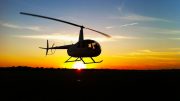
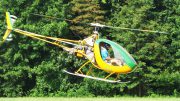
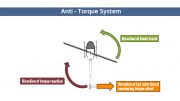
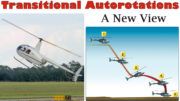
Be the first to comment on "Helicopter Pilot Training – Plan To Crash"